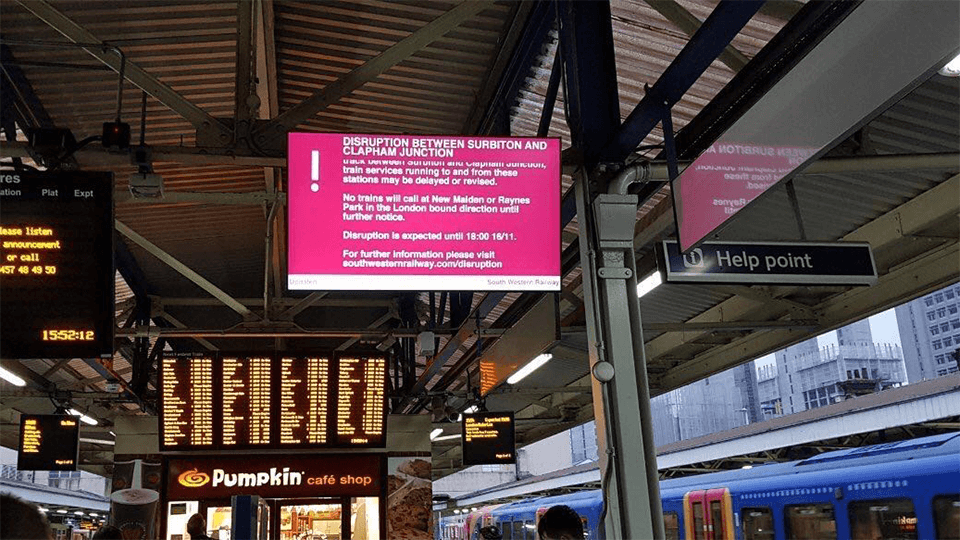Singapore, often regarded as a futuristic metropolis, has consistently been at the forefront of technology and infrastructure developments. One such innovation that has seamlessly blended into the daily lives of Singaporeans is digital signage. This article delves into the intricate web of digital displays dotted across the Lion City’s transportation grid and showcases why digital signages have become indispensable in the modern landscape.
Digital signage, in essence, is a dynamic display that presents information, advertising, and other messages electronically. When you traverse Singapore’s bustling MRT stations or wait at the bus terminals, the vivid displays updating you with real-time information? That’s digital signage at work. As Singapore’s transportation network continues to grow and evolve, the inclusion of these digital displays has become a hallmark of progress.
Historical Perspective
Earlier, static signs made of metal or plastic were the norm in public transportation hubs. They served their purpose but had limitations in terms of flexibility and efficiency. With the dawn of the digital age, Singapore was quick to recognize the potential of electronic displays. The transition was methodical, with traditional signs gradually making way for vibrant, dynamic screens. Today, thanks to proficient digital signage suppliers in the region, our transportation hubs are equipped with state-of-the-art digital displays.


Advantages of Digital Signage in Transportation
1. Real-time Updates: For the daily commuter, being updated in real-time can be the difference between catching a train or missing an appointment. Digital signage, unlike its static predecessors, can be updated instantly. This feature becomes particularly essential during unforeseen delays or re-routing. Additionally, during rush hours, screens can guide crowds efficiently, reducing congestion.
2. Enhanced User Experience: Remember the first time you saw an interactive map at an MRT station? The ease with which you could navigate your route was unmatched. Digital signage suppliers have also ensured multi-lingual displays, recognizing Singapore’s diverse demographic, ensuring inclusivity.
3. Sustainability & Maintenance: With sustainability being a buzzword today, digital signage triumphs over traditional printed signs. Electronic displays can be updated without the need for physical replacements, thereby reducing waste. Furthermore, although they might require periodic technical maintenance, the long-term benefits far outweigh the cons.
4. Advertising & Revenue Generation: Businesses quickly grasped the potential of these digital boards. Tailored ads based on the time of day, ongoing events, or even real-time data (like crowd density) can be displayed, leading to effective and targeted advertising.
Challenges and Limitations
No technology is without its set of challenges, and digital signage is no exception.
1. Initial Investment: The initial costs for setting up digital displays can be hefty. But, with the right digital signage suppliers and considering the long-term gains, this investment proves worthwhile.
2. Maintenance and Technical Issues: Like any electronic device, digital signs can malfunction or need regular updates. Ensuring minimum downtime becomes crucial, especially in high-traffic areas.
3. Data Privacy & Security: With the advent of interactive kiosks collecting user inputs, the importance of safeguarding personal data cannot be overstated. It’s imperative to align with Singapore’s PDPA to ensure data protection.


Successful Implementation
1. MRT (Mass Rapid Transit) Digital Displays: These are possibly the most accessed digital signages in Singapore. With real-time train schedules, delay announcements, and dynamic advertisements adjusted based on crowd density, they epitomize the best of what digital displays can offer.
2. Bus Interchanges & Terminals: Gone are the days of squinting at printed bus schedules. Digital screens now display live timings, routes, and even integrate with weather updates or news snippets.
Integrating AI and Big Data
1. Predictive Analysis for Commuters: Imagine if your MRT station could predict and display congestion levels for the next hour! With AI and big data, such predictive analyses could soon become a reality.
2. Personalized Content Delivery: As technology advances, the collaboration between mobile apps and digital signages can lead to users receiving personalized route suggestions or offers from nearby establishments.
3. Integration with Mobile Apps: A synergy between personal devices and public displays can elevate the commuter experience. Augmented reality interfaces or real-time updates directly to your phone are on the horizon.
Conclusion
In summary, digital signage has not just transformed but elevated the experience of commuting in Singapore. As we continue on this journey, it’s clear that with the expertise of digital signage suppliers, the sky’s the limit for what we can achieve in creating a smart, efficient, and user-friendly transportation network for all Singaporeans.
